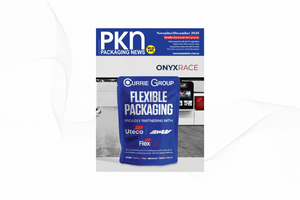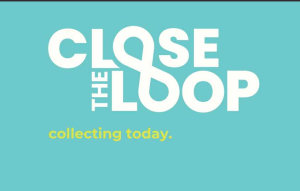Following the launch of a zero-alcohol version of one of Accolade Wines’ most well-known brands Hardys, and new premium brand &Then launching in Australia in September, Kim Berry talks to the company’s ZERO lead winemaker Paul Burnett about what it takes to make a NoLo wine.
Just as the global protein market is undergoing its own transformation, the alcohol industry is experiencing changing demands from consumers across the board.
IWSR Drinks Market Analysis found NoLo beverages grew by more than 6 per cent in 10 key global markets, including Australia, to take up a 3.5 per cent volume share of the market. In 2021, the NoLo market was worth around $14 billion, up from $11.2 billion in 2018.
Accolade Wines ZERO lead winemaker Paul Burnett has worked all over the world, from vintages in Italy and California to business development in China and Canada.
Based in the “engine room” of Australia’s wine industry, South Australia’s Riverland, at Accolade’s Berri Estates, Burnett confesses he was a sceptic when it came to zero alcohol wines.
“As a supplier of commercial volumes, we are at the forefront of innovation and new product development. The focus on quality and systems is very strong, but when the sales and marketing teams came to us and proposed a zero-alcohol range for the Hardys label to tap into the growing trend, I was sceptical,” Burnett says.
IWSR forecasts NoLo volume will grow by eight per cent compound annual growth rate (CAGR) between 2021 and 2025, compared to regular alcohol volume growth of 0.7 per cent, while market research firm IRI estimates the Australian zero-alcohol wine category is valued at $16 million.
In Grocery, the category is up$9 million (22 per cent vs a year ago (YA), and in Liquor the category is up $7million (900per cent vs YA).
With the passion and enthusiasm emanating from the sales and marketing team and trend figures impossible to ignore, the wine making team set to work.
They benchmarked what they wanted to achieve, brought in all the zero alc options currently on the market for a series of testings with assessment, and then calibrated what should be in the development brief.
“We had a dream about what sort of wine we wanted to release, then set about bench blending, small-scale distillation, and small-scale dealcoholisation to create the base wines.
“If I’m honest, I was sceptical right up to that final hurdle, when I could finally say, I think we’re actually going to deliver it. We’ve made a zero-alcohol wine that is flavoursome.”
From those first tastings of existing wines on the market, Burnett and the team had found a lot of them to be “too sweet, not exciting, quite vinous, and not sessionable”.
“We suspected the base wines being used were almost non-varietal and being picked because they had a label to fill. Our team wanted to go back to the drawing board, find a wine they were proud of, go through the dealcoholisation process and then build it back right through to the packaging. We were focused on delivering varietal wines that were not saturated with sugar,” he says.
IWSR Drinks Market Analysis COO Emily Neill says the market is still very much in its infancy across categories and geographies as it continues to define itself.
“Brands that will ultimately dominate in the NoLo space are those that are successful in navigating the barriers of taste, price, pack format, availability, and overall consumer education,” Neill says.
Burnett says making a NoLo wine follows the same principles of one with alcohol, identifying the grapes to use and then creating the base wine.
He says for the Hardys range, bright varietal base wines were selected that had oak integrated in them but weren’t dominated by it.
“We wanted the oak to frame the wines and be supportive. So, we identified a really bright ripe chardonnay and the same with the shiraz and that was in the Hardy’s range,” he says.
The winery was also tasked with developing a premium no alc offering for the &Thenrange.
For that, Burnett turned to premium viticulture, selecting Limestone Coast for the chardonnay and Langhorne Creek for the cabernet, using small-scale high-end wine making methods.
“It all comes back to the base wine and then, the biggest challenge in any wine making, the blending and fine tuning,” he says.
Turning from the old to the new
Dealcoholisation of wine is not new, often used to find the “sweet spot” for a wine, but for a zero-alcohol wine like the Hardys ZERO range, Accolade looked to new technology that it had never used before.
“Instead of traditional spinning cone or falling film evaporation methods, we used a first-to-market go-lo technology we’ve called Zero Tech X, which gently de alcoholises the wine at a cooler temperature.
“It is done under vacuum and gives the team more options when it comes to blending, which is where the skill really comes in. It’s the first time we’ve used this sort of technology at Accolade Wines and we are thrilled with it,” Burnett says.
Another critical component of creating a NoLo wine is the need to bottle it quickly. A key directive from our global director of wine making was to ensure scheduling and packaging were adjusted to account for the proclivity of the wines to oxidise unlike standard wines.
“It was a key driver for us when planning production for the range.
“Everything is scheduled around the dealcoholisation process, so the wine spends the least number of minutes out of the tank before into Zero Tech X and then into the bottle,” Burnett explains.
The result is the Hardys ZERO range, featuring a Shiraz, Chardonnay, and Sparkling.
The &Then label will release its Rosé and Sparkling in Australia from September.
Maintaining standards
Similar to what is happening in the alternative protein market, consumers’ motivation with NoLo varies from abstention to moderation.
IWSR said 43 per cent of people who had bought NoLo beverages were doing so to substitute for full strength alcohol at certain occasions rather than abstaining. Less than one fifth (17 per cent) said they were drinking NoLo to avoid alcohol completely.
“We have produced zero alc wines that you talk about like you would a traditional wine. The &Then Cabernet is a good lunchtime wine. It has lovely tannin and a nice oak balance, which goes well with steak or pasta – totally guilt free,” Burnett says.

Being a healthier alternative was always more than just removing the alcohol for Accolade. Ensuring the sugar level was “balanced and complementary, not cloying and dominating” was also key.
According to IWSR, evenings at home, with friends or at mealtimes, are the most popular times for NoLo drinks across all demographics.
Burnett says with many consumers wanting to reduce their alcohol intake, he is proud the team at Berri have produced a sessionable drop. From sceptic to advocate, Burnett is now proud to endorse a ZERO alc option.
This story first appeared in the August issue of Food & Drink Business magazine.






